Honor Magic V3 review: style and substance to take on the best
Honor's wafer-thin foldable packs plenty of bite

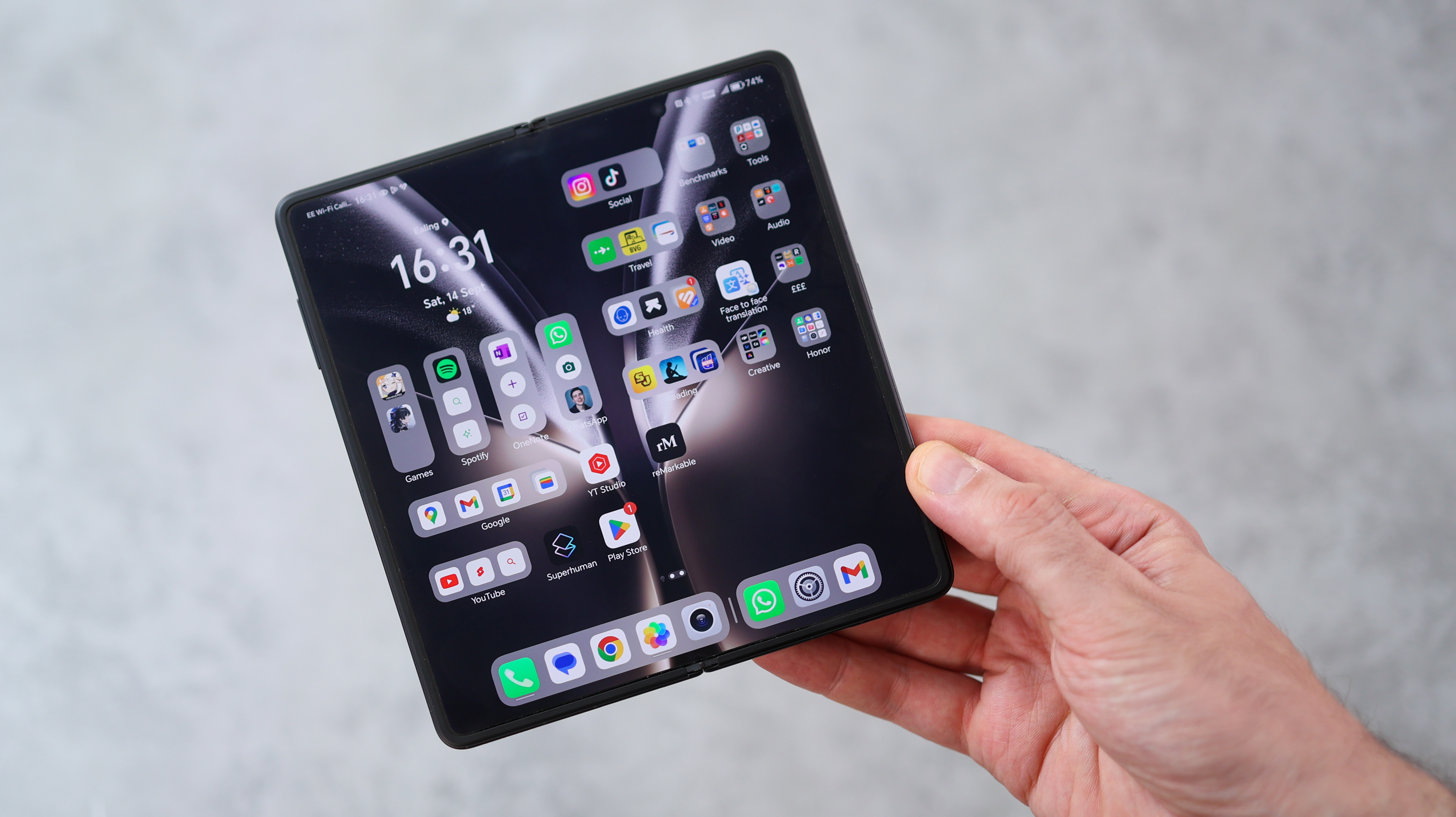
The Honor Magic V3 is thinner, lighter and costs less than the main foldable competition. Its cameras are better, it has more storage, faster charging and a larger battery too. So while the software isn't as refined and Honor's update commitment is less extensive than, say, Google's – for anyone who wants their foldable to feel like a traditional phone when closed the Magic V3 is the one to beat.
-
+
Very thin and light design
-
+
Meaningful software updates over V2
-
+
Fast-charging and decent battery life
-
+
Impressive cameras for a folding phone
-
-
Pre-installed bloatware
-
-
Photo processing inconsistencies
-
-
Hinge isn't as smooth/secure as the competition
Why you can trust T3

If you're plugged into tech news, you may have seen a lot of big talk from Honor about how much better its new Magic V3 is than the Samsung Galaxy Z Fold 6. Between issuing 'apologies' to Samsung customers, to finding a couple of people called 'Sam Sung' to big-up its new phone, Honor isn't pulling any punches. Big talk, sure, but can the Magic V3 really back it up?
We got our hands on a Chinese version of the phone a couple of months before it was launched for the West – it looked futuristic then and continues to stand out among the best folding phones thanks to its slender design. Between its thin body, lightweight and big screens, it's the only folded phone that barely feels thicker than a standard mobile (along with the China-only Xiaomi Mix Fold 4).
Even Google's impressive new Pixel 9 Pro Fold can't quite match it for slim-factor – but Google has software and support much more on point. That's where Honor has dropped the ball in the past – with the waif-like previous-gen Magic V2 also missing out the camera smarts of its Galaxy Z Fold 5 and OnePlus Open competition. So can the Honor Magic V3 win where the company hasn't been 5-star perfect before?
Honor Magic V3: Price & Availability
Foldables are expensive, and the tech-packed Honor Magic V3 is no exception, costing £1,699 (roughly $2,230 / AU$3,400 – although it won't be available in the USA). At launch, Honor is piling on the promos with £300 off ($400 approximately), a free stylus pen, smartwatch, pair of earbuds and power adapter, as well as 6 months of screen protection. With or without these early-bird offers, the Magic V3 still undercuts the Galaxy Z Fold 6, which starts at £1,799 ($1,899 / AU$2,749) despite packing half the storage in its lowest-cost version.
When you look at what else is on the market outside Honor and Samsung camps – the OnePlus Open costs £1,599 ($1,699, and there's no Australia availability) and that's with a past-gen processor, while the Pixel 9 Pro Fold is £1,749 ($1799 / AU$2699). Meanwhile, the new iPhone 16 Pro Max with a Magic V3-matching 512GB costs £1,399 ($1,399 / AU$2,499). That's the same price in the UK as the V3's pre-order price.
Honor Magic V3 review: What's new?
- Thinner and lighter design
- Better water-resistance
- Periscope zoom camera
- Upgraded eye-care features
- Qualcomm Snapdragon 8 Gen 3
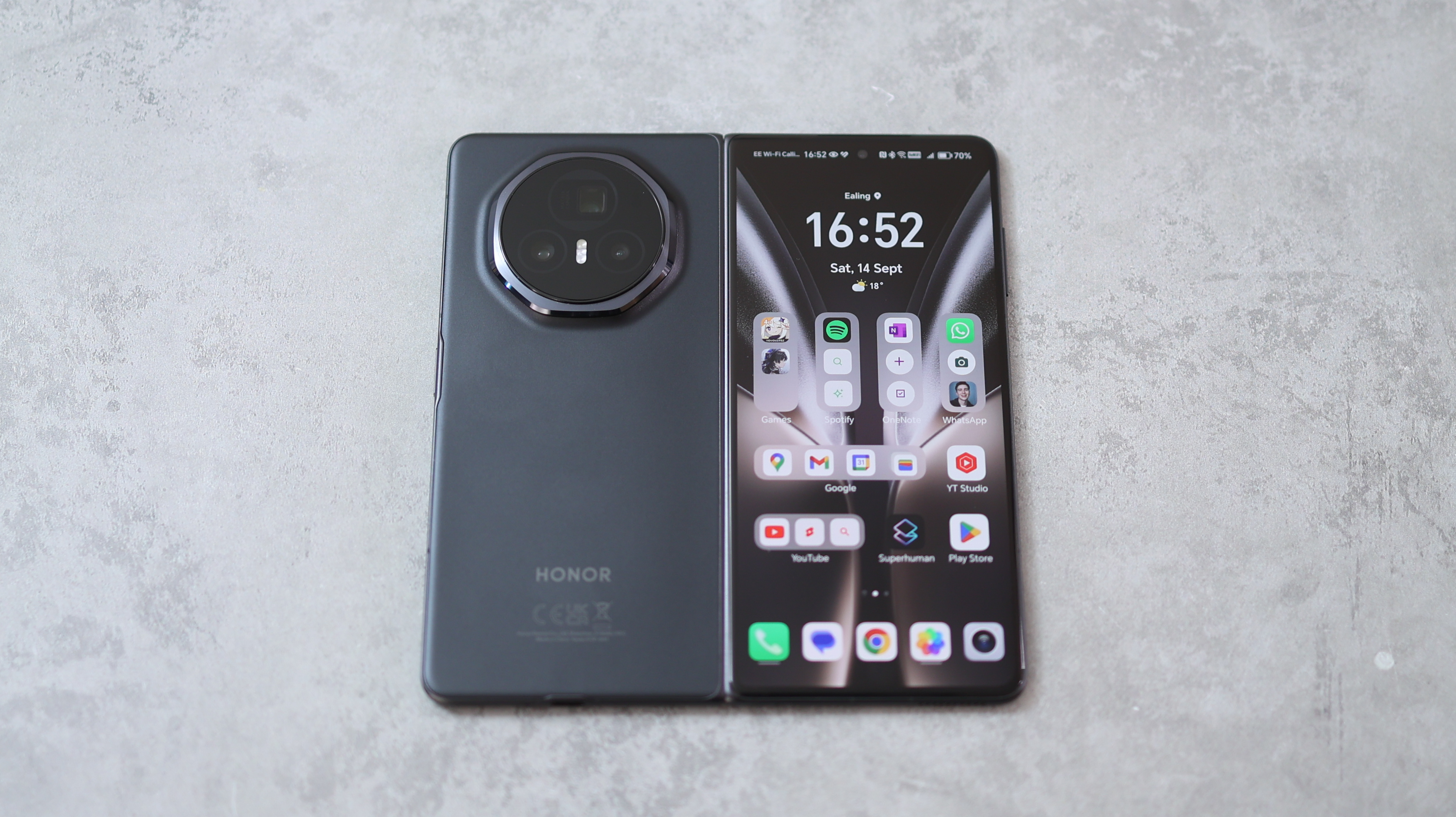
The new Honor Magic V3 is thinner, lighter, and has a more specced-out camera system than the Honor Magic V2. The camera also gets an upgraded portrait mode, bringing back the Studio Harcourt styles introduced on the Honor 200.
With the latest Qualcomm Snapdragon 8 Gen 3 power and an upgraded interface that's been tuned for the unfolded display when the Magic V3 is opened up, Honor's latest phone is, without a doubt, the most cutting-edge foldable package the brand makes.
Get all the latest news, reviews, deals and buying guides on gorgeous tech, home and active products from the T3 experts
While the Magic V3's displays are similar to those of the V2 (and that's no bad thing), Honor has upgraded the eye-care credentials with a new defocus display feature that is stated to reduce eye-strain associated with prolonged screen time.
Honor Magic V3 review: Design
- Colours: Black, Green, Reddish Brown
- Dimensions: 74 x 145.3 x 9.2/9.3mm (colour dependent)
- Weight: 226g/230g (colour dependent)
- Magic Pen compatible (sold separately)
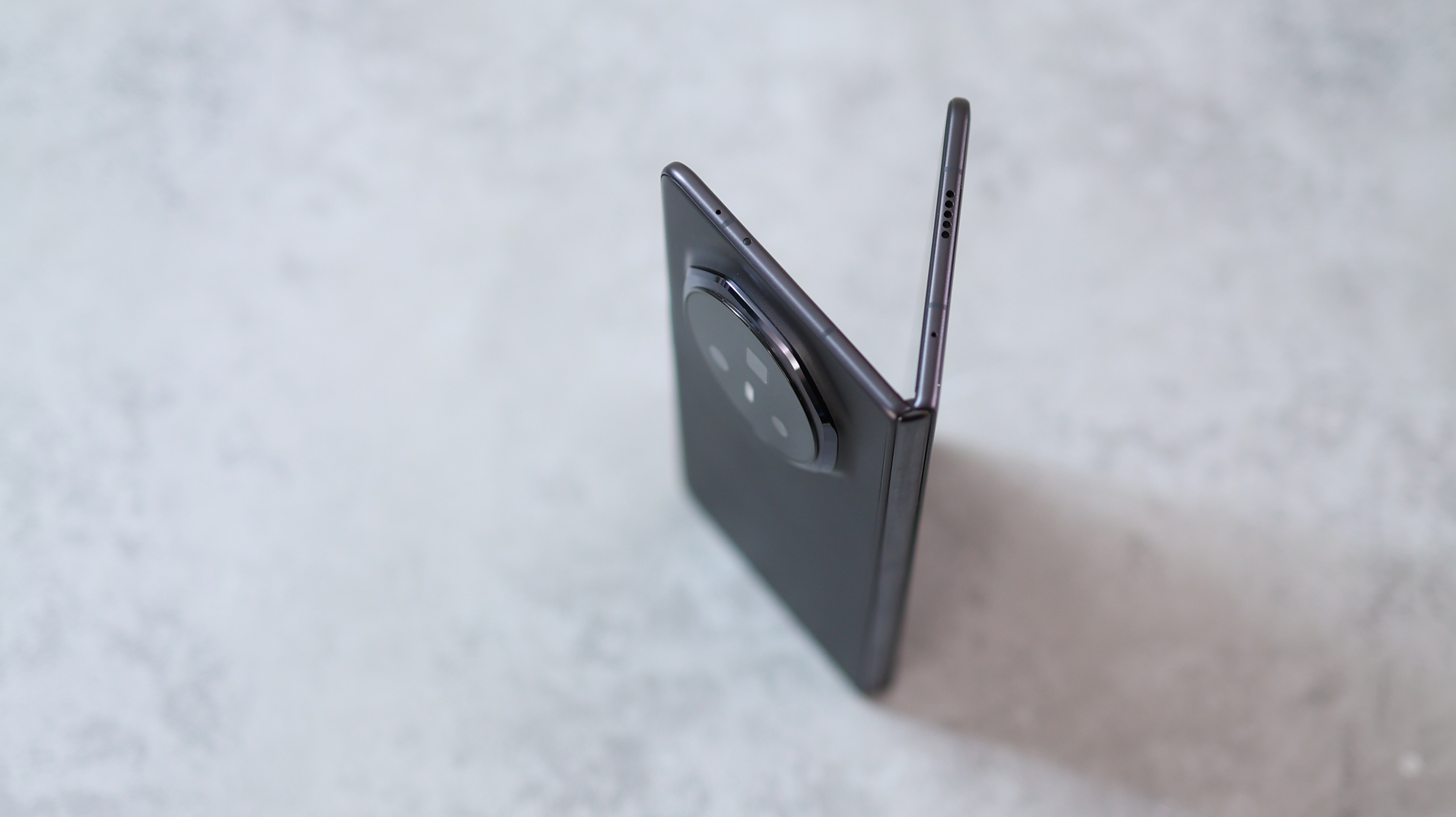
Honor's new foldable is the thinnest and joint-lightest big-screen foldable on the market. Its size makes it feel like using one of the best phones when closed, and an impossibly skinny small tablet when open.
Perhaps what's most impressive for anyone coming from a narrow Samsung Galaxy Z Fold is the V3's large front display and the ample inner screen, despite the phone's more manageable dimensions compared to the competition.
The V3's metal frame has a matte, satin finish that gives it extra grip when compared to the Honor Magic V2's polished metal. There is a strip of shiny metal along the spine when the phone is closed and the hinge is exposed, and around the back is either matte glass, a composite material, or vegan leather.
In its glass finish, the V3 is available in green, while the vegan leather back panel is reddish-brown with gold accents. To shave some weight off, Honor has made a black version of the Magic V3 with a lightweight composite material (making it 4g lighter than the other two colours, at 226g).
If you're concerned about durability, the V3 is IPX8 water-resistant, certified at up to 2.5m depths for up to 30 minutes, though Samsung's Z Fold 6 does best Honor when it comes to dust-resistance (and that's hard to do in a foldable). The V3 has a pre-fitted screen protector on the cover screen glass and tempered glass underneath.
Wrapping up with the Magic V3's hinge, and while it's been perfectly functional in our time with the foldable, it's definitely the main drawback of the phone's feel. Compared to the the Galaxy Z Fold 6 and Pixel 9 Pro Fold, it has a bit more wobble, and even compared to the similarly slim Xiaomi Mix Fold 4, it feels less smooth, with a slight crunchiness as it unfolds flat. While not a mark against the Magic V3's usability, it does slightly detract from the phone's overall finesse – there's where the V4 could go one better.
Honor Magic V3 review: Displays
- Cover display: 6.43-inch 20:9 aspect ratio OLED, 2376 x 1060 resolution, 1-120Hz refresh rate
- Internal display: 7.98-inch 9.78:9 aspect ratio OLED, 2344 x 2156 resolution, 1-120Hz refresh rate

I prefer the Honor Magic V3 over the Galaxy Z Fold 6 mainly because of the cover screen. While Honor is panning Samsung's chunky styling, I appreciate the grip it adds, not to mention the confident lines and angles. What I don't love about the Z Fold 6, however, is how narrow the front display is, resulting in a more cramped typing experience.
The Honor Magic V3 has a significantly wider front display that measures 6.43-inches across the diagonal and sports a 20:9 aspect ratio – the same as the Pixel 9 Pro Fold's cover screen – which feels much more 'normal' among the best Android phones and it delivers a great day-to-day experience.
With a bright OLED panel that's easy to see outdoors, looks smooth and packs plenty of pixels for a crisp view – whether watching, gaming or reading, –a closed Honor Magic V3 never forces you to open it because it's too cramped for 'standard phone things'. That's a critical selling point here.
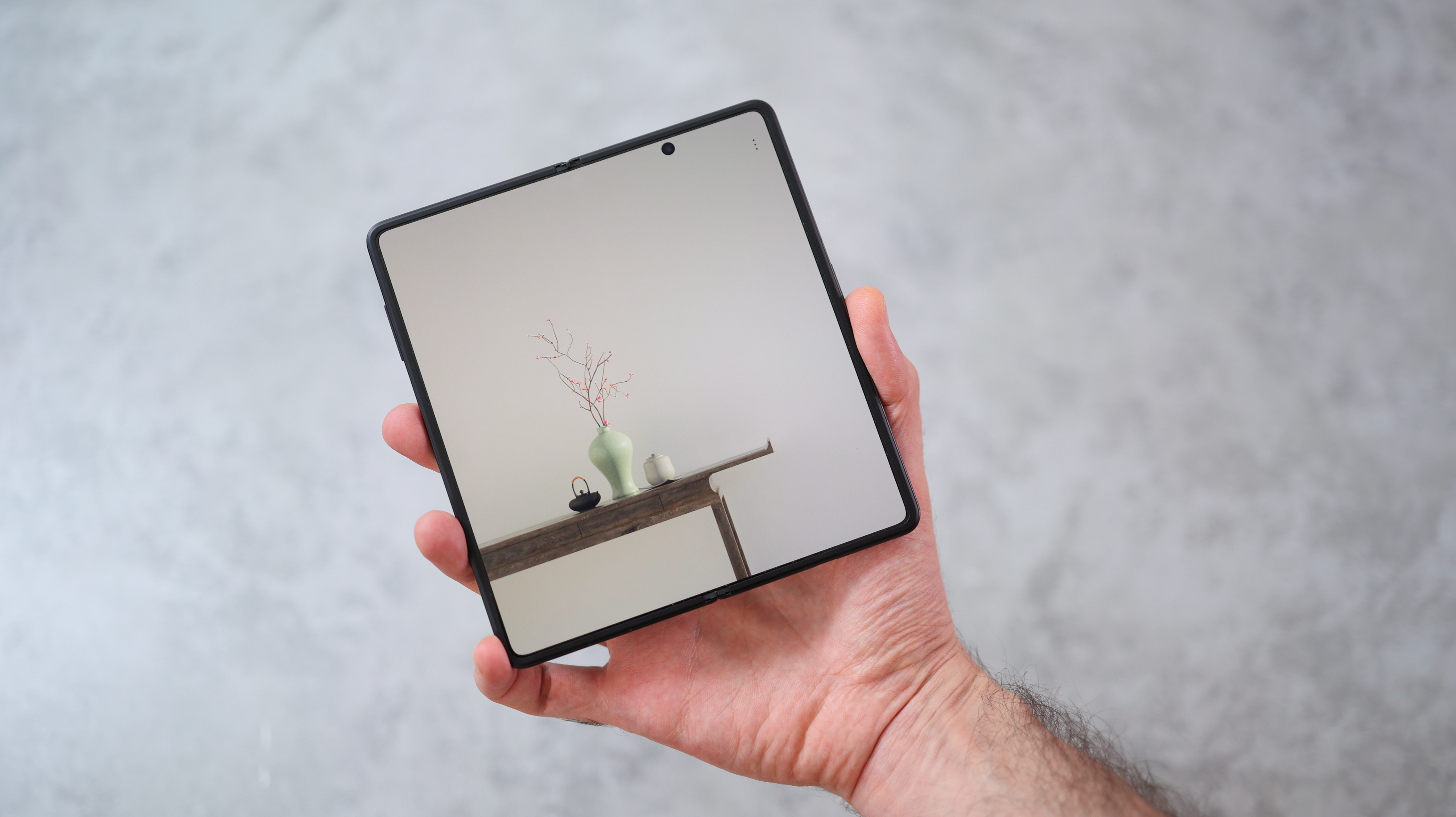
When you do open the phone, the Magic V3's large 7.92-inch tablet-style display gives you more room to show off pictures to friends, thumb through a spreadsheet, or fire up a video. Its crease is also less pronounced than that of the Z Fold 6, and with stylus support for both the cover and inner display, it also edges ahead of many competitors that front too.
Honor's new eye-care features include a defocus display and low PWM dimming. While I didn't notice a significant reduction in eye strain in my fortnight with the phone, after prolongued use this feature might come into its own – especially if you're using the device for long bouts of screen time.
Honor Magic V3 review: Performance & Battery
- Processor: Qualcomm Snapdragon 8 Gen 3, 12GB RAM
- Battery: 5150mAh, 66W wired/50W wireless charging

Thanks to flagship internals, the Honor Magic V3 performs admirably. Like all folding phones, it doesn't deliver maximum bang for buck when it comes to 3D graphics despite its top-tier Snapdragon 8 Gen 3 chipset, but it can still power through a AAA title like Genshin Impact at high graphics settings.
When you're hammering the phone with split-screen gaming and mobile hot-spotting, the phone does get warm, but Honor isn't afraid of throttling performance to keep the heat down either, so this stops it from getting too hot.
Thanks to its high-capacity battery, which is significantly more impressive than that of the Galaxy Z Fold 6, the Magic V3 does a better job of getting through a full day, especially with loads of photo-taking and typical phone use. Open up the V3, and you'll notice the battery drains faster, but it's still competitive.
The phone also charges very quickly, powering up fully in around 45 minutes, roughly half the time it takes the Galaxy Z Fold 6 at max charging speed. The V3 doesn't ship with a power brick, thought, so you'll need to buy one separately to take advantage of fastest 66W wired charging speeds.
Honor Magic V3 review: Software
- Google Android 14 with Honor's Magic OS 8.0.1 interface
- Updates Honor's foldables with taskbar and Magic Portal
- Pre-loaded bloatware and duplicate apps let it down

One of the most valuable updates to the Magic V3 when compared to its predecessor is in terms of software. I had some time with an early version of the V3 and its software was underbaked. The version I tested for this review, however, gave me a perfectly stable fortnight of use.
The first point is that Honor has swapped its default keyboard from Microsoft's Swiftkey to Google's stock keyboard, Gboard. This makes the whole experience feel more cohesive for anyone coming from another Android phone. However, across both screens, Honor needs to tune Gboard so it doesn't close when you miss the spacebar. This is easy to remedy in the Gboard settings – add some buffer below the keyboard – but the Honor Magic V3 really should get these small details right straight out of the gate.
Other than the fixable keyboard gripe, Honor's new software is a big step in the right direction. The taskbar makes it easier to multitask, with up to two apps split screen and multiple slots for floating apps on-screen and docked apps off-screen.
Honor also introduces a new feature called Magic Portal on the V3, which is a means of sharing to your favourite apps by selecting text or an image, then dragging it into the edge of your display. This only works with a handful of apps currently, but with these including Gmail, YouTube, Google Maps and WhatsApp, it's still a handy feature when searching for an address or quickly sending a message, removing a step when compared to the standard Android method.
Honor's user interface is still lumbered with two app stores (Honor's own and the Google Play Store) amongst other duplicates and pre-installed bloatware, though with most of these being easy to uninstall or disable, it's simple enough to make the interface look relatively clean and customise the phone to your needs.

For anyone with an Honor tablet or the new Honor MagicBook Art 14 laptop, it's also great to see extensive cross-device integration, with the unfolded Magic V3 able to act as a dinky second screen for your MagicBook. For owners of the MagicPad tablet, you can also project your phone's display to the tablet to share a clipboard (a feature that also works on both Honor and Huawei laptops based on our testing).
Another boon for the Magic V3 over Samsung is support for stylus input across both the cover and main display. While the pen is an active stylus (these require charging and are less accurate than the EMR stylus Samsung uses), the fact it works on both screens will appeal to pen-lovers.
With 4 years of operating system updates and 5 years of security updates, it's good to see Honor commit to longer-term support, even if it does fall behind the 7 years from Google and Samsung. Also important for a phone's future-proofing is the amount of storage it gets, and Honor packs the Magic V3 with 512GB – which is double the starting capacity of the Galaxy Z Fold 6 and Pixel 9 Pro Fold.
Honor has also included artificial intelligence (AI) tools, as we've come to expect from flagships of late, including object removal in photos, transcription within the notes app, and live translation features. These aren't as extensive or polished as Google or Samsung's AI solutions, but they're handy and check that obligatory AI box for 2024.
After a week with the Pixel 9 Pro Fold and Magic V3, I also appreciate the more granular control Honor gives users over how apps display. Yes, the Pixel's interface is cleaner, but Honor lets you force a full-screen view on the cover screen – so apps like Amazon Prime Video take advantage of the whole display – and ultimately make the phone work how you want it to. This extends to what each app does when you part-fold the phone to how they display on the inner screen, and if you're looking for a phone to geek out over, Honor gives you more to tweak and tinker with than Google.
Honor Magic V3 review: Cameras
- Main: 50-megapixel, f/2.2 aperture, stabilisation (OIS)
- 3.5x optical zoom: 50MP, f/3, OIS
- Ultra-wide: 40MP, f/2.2
- Selfie x2: 20MP, f/2.2

Another area the Magic V3 leapfrogs its predecessor is with its camera, especially when shooting at night. The V3 has three cameras around the back, with all being high-resolution and competitively specced.
Before covering what's so good about Honor's camera, it's easier to caveat with our overriding criticism that each camera has a different approach to photos. You can take a picture on the primary, ultra-wide, and telephoto, and each can have very different qualities, from the white balance to overall look and feel.







With more phones feeling like a cohesive camera setup than ever before – most notably the excellent Xiaomi 14 Ultra – and that quality extending to the China-only Mix Fold 4, Honor's Magic V3 drops the ball when it comes to consistency. Again, it's the details that matter.
In the V3's defence, however, it has three very competitive cameras that take quality photos at a range of focal lengths. The ultra-wide has autofocus so can capture close-up and far-reaching scenes. The primary camera has a large sensor, excelling for video, capturing the broadest natural bokeh and dynamic range. Finally, the telephoto camera is helped by AI when zooming into the distance to create clean shots, and at its 3.5x optical focal length it's excellent for portraits.
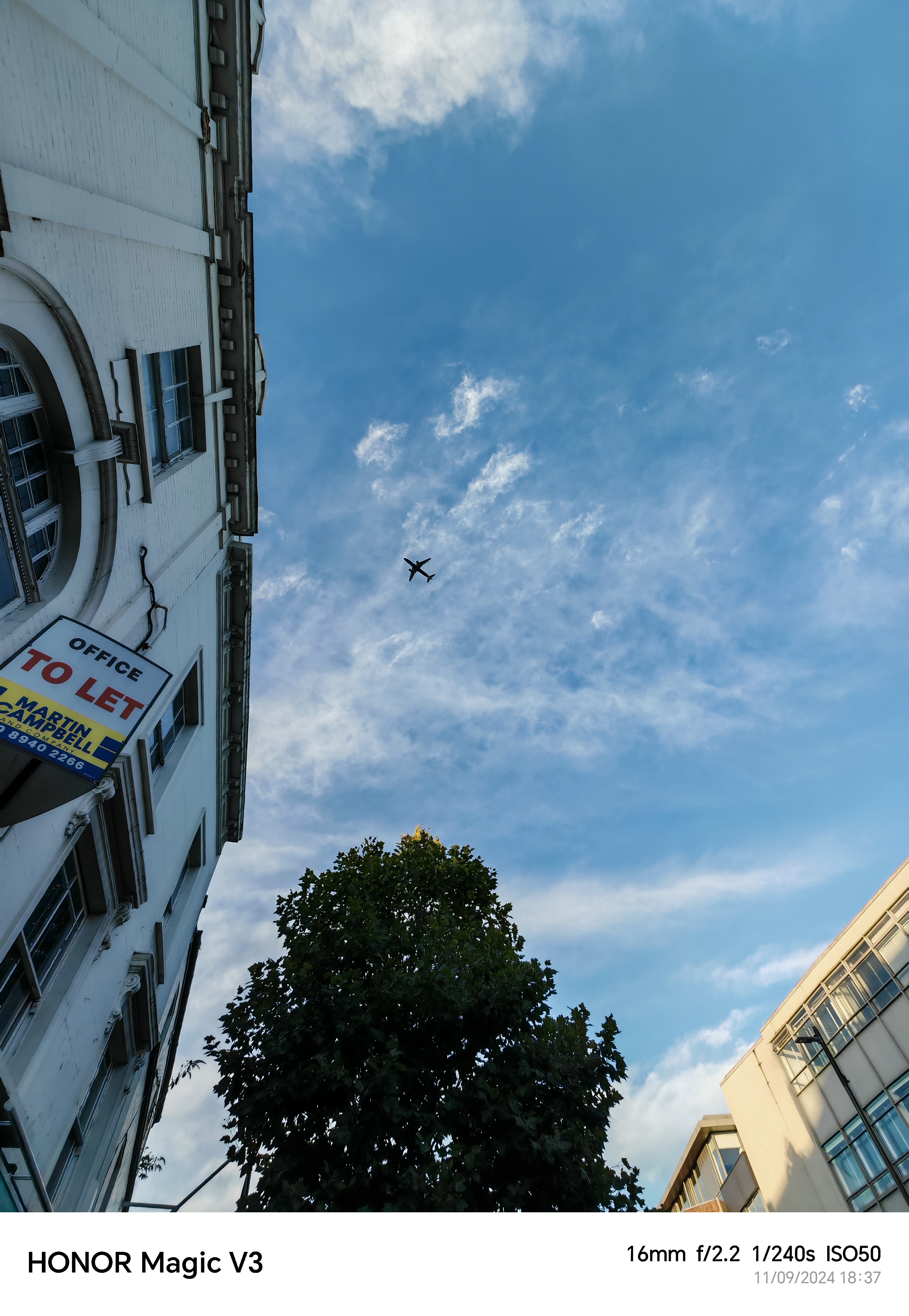




The Pixel's 5x zoom might look better on paper, but practically speaking, its a smaller, lower-resolution sensor and further optical reach isn't as useful as a 3.5x, higher-quality periscope module – especially when shooting at night. When the lights drop, the Magic V3's auto night mode wipes the floor with Google's and Samsung's equivalenets – simply because it's so good across all three of its cameras.
Honor also brings back the Studio Harcourt portrait mode as introduced on the Honor 200 series, and this does a great job of adding a creative, dramatic look to portraits, especially black and white ones.
Honor Magic V3 review: Verdict

Despite its imperfections and slip-ups with regards to a few minute details, the Honor Magic V3 is ahead of the Google Pixel 9 Pro Fold and Samsung Galaxy Z Fold 6 when it comes to feeling like a regular everyday phone when it's closed. Its lightweight, high-capacity battery, faster charging speeds and superior cameras across the full range give it an edge that makes it well worth considering.
While aspects of the software fall behind the competition, the granular control it offers compensates for the inherent quirks that foldable phones come with regarding app support. There are also thoughtful, meaningful software improvements over the Magic V2. If you can cope with software that's behind the very best, the rest of Honor's offering is mighty impressive.
The Honor Magic V3 will be the best option for anyone who prioritises cameras and slimline design. It's a breakthrough for the folding phone category as a whole.
Also consider
The OnePlus Open is arguably the camera choice for foldables with its advanced main camera, quality telephoto camera and versatile ultra-wide. The Hasselblad photo processing is more consistent than that of the Magic V3, and while it misses out on current-gen power, the Snapdragon 8 Gen 2 is still a mighty chipset.
For fans of small phones, the Samsung Galaxy Z Fold 6 has the smallest cover screen and footprint despite being chunkier and heavier than the Magic V3. Its software is more refined, packs far superior AI tools, and Samsung offers longer software support than Honor.
The Google Pixel 9 Pro Fold marks a giant leap forward for Google, with excellent styling, the biggest internal display of any foldable on sale, and advanced AI features that will only continue to improve. As with Samsung, though, the longer software support here is a boon, and photo processing is more consistent.

Basil has been writing about tech for over 12 years, with bylines in TechRadar, Metro, Wired, and Digital Camera World – to name but a few titles. He expertly covers everything from mobile phones to smart devices, cameras, audio-visual hardware, and kitchen tech. In addition to his extensive journalism experience, Basil is also skilled in video production, content strategy, and vegan baking, and runs Tech[edit], a technology-focused YouTube channel.